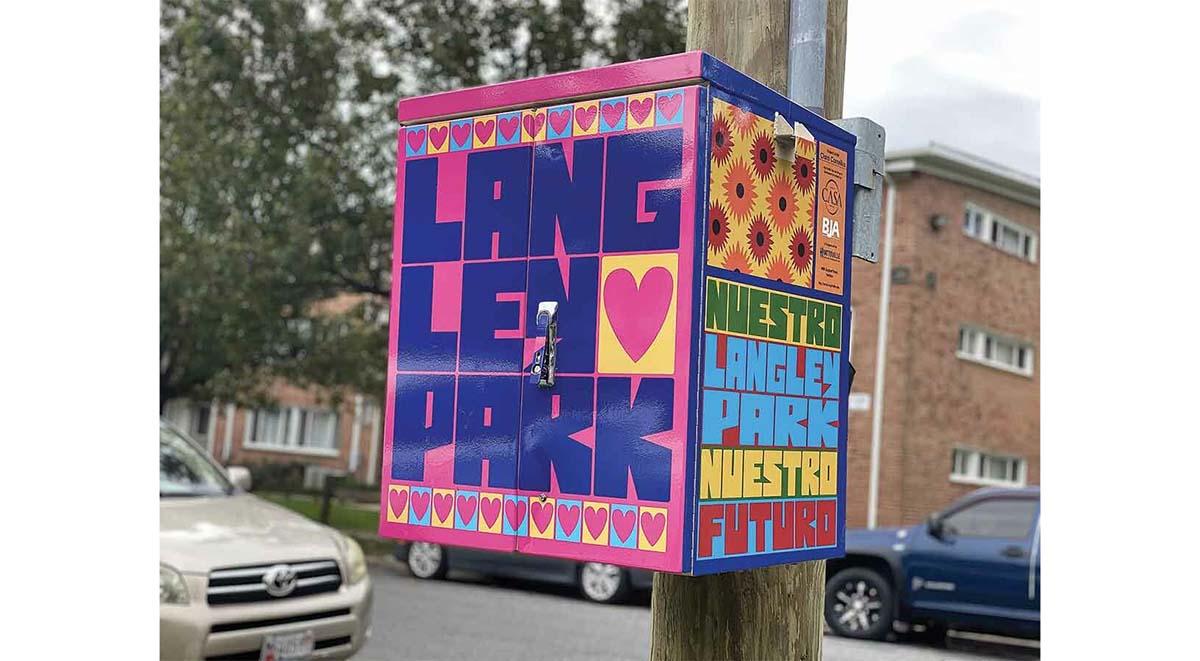A new University of Maryland study conducted in a neighboring Prince George’s County community suggests that creating safer Black and Latinx neighborhoods doesn’t require more policing, but more investment.
The research examined outcomes of a four-year crime reduction project in Langley Park, demonstrating that more streetlights, mental health services, youth outreach and public art are as important—and possibly more effective—at boosting community safety in immigrant neighborhoods than programs designed to build trust with local police.
The study by Associate Professor Willow Lung-Amam in the Urban Studies and Planning Program, doctoral candidate Nohely Alvarez and Howard University Professor Rodney Green was published this month in the Journal of Community Practice.
“Many people think the problem of neighborhood crime and safety is one of not enough policing,” said Lung-Amam, who has been working and researching in Langley Park for 15 years. “But for communities of color and immigrants, police are often a big part of the problem.”
At less than one square mile, Langley Park is a predominately Latinx immigrant suburb two miles west of UMD. While it boasts a close-knit community with strong ties to neighborhood businesses, churches and nonprofit organizations like CASA, the Mid-Atlantic’s largest immigrant rights organization, 1 in 5 Langley Park residents live below the poverty line.
Langley Park’s designation by the county as a “crime hotspot” spurred CASA to secure a grant from the Bureau of Justice Assistance to plan and implement a series of activities to reduce crime and enhance safety. CASA, UMD, the Prince George’s County Police Department and other project partners planned activities and strategies around five challenges, including improving community-police relations, youth gang prevention and reducing alcoholism. Many of the activities focused on community development and neighborhood improvement.
In analyzing the two-year implementation phase, researchers found that police-related activities did not offer significant reductions in crime or increase residents’ sense of safety. Despite stakeholders’ efforts to improve community-police relations through tactics including Spanish-language classes for police, a police-youth soccer league and “meet an officer” coffee events, these had limited positive results, and in some cases, deterred resident participation.
In contrast, stakeholder- and community-led efforts to boost neighborhood investment, improve infrastructure and educate residents had more positive, enduring results, the researchers reported. Events like community walks, gang prevention programs and forums for residents to connect and voice concerns increased neighborhood pride and cohesion, according to community surveys. Those successes also led to additional funding for alcohol abuse prevention programs, graffiti removal, tree planting and plans for a community garden.
“I think that residents do want help from the police, but at the same time they don’t trust them,” said Alvarez. “How do you gain that trust? It has to be the residents mandating what they want, and that’s what we were hearing from residents and youth. You can’t just improve safety through community-police relationships—it’s all of these other little aspects of underinvestment that come together and create this conflict.”
Further, these types of investments last. The youth soccer league (absent of police involvement), gang prevention program and health programs not only met the benchmarks outlined by the project, they continued after the grant period, unlike programming centered on police relationships.
For decades, eradicating crime and increasing public safety in the U.S. has meant more policing. But for immigrant communities, neighborhood policing is mired in a history of brutality, bias and mistrust. Studies have shown that extra policing not only often fails to make marginalized communities safer, it ignores the underlying sources of crime: high rates of poverty, aging or inadequate infrastructure, underemployment and underfunded schools.
Lung-Amam and Alvarez said strong community-based organizations like CASA that hold the trust of residents are vital to increasing neighborhood safety. This study, one of only a handful focusing on the impacts of community policing and development in Latinx immigrant communities, highlights the kinds of investments that lead to safer communities, and who should be leading those efforts, they said.
“A lot has been written about community policing in urban neighborhoods and cities across the country, but not a lot of it has been written in the context of suburbs, especially immigrant communities,” said Alvarez. “I think this case study shows the need for examining what policing—and investment—can look like there, so that residents feel safer in their communities and secure around police.”

